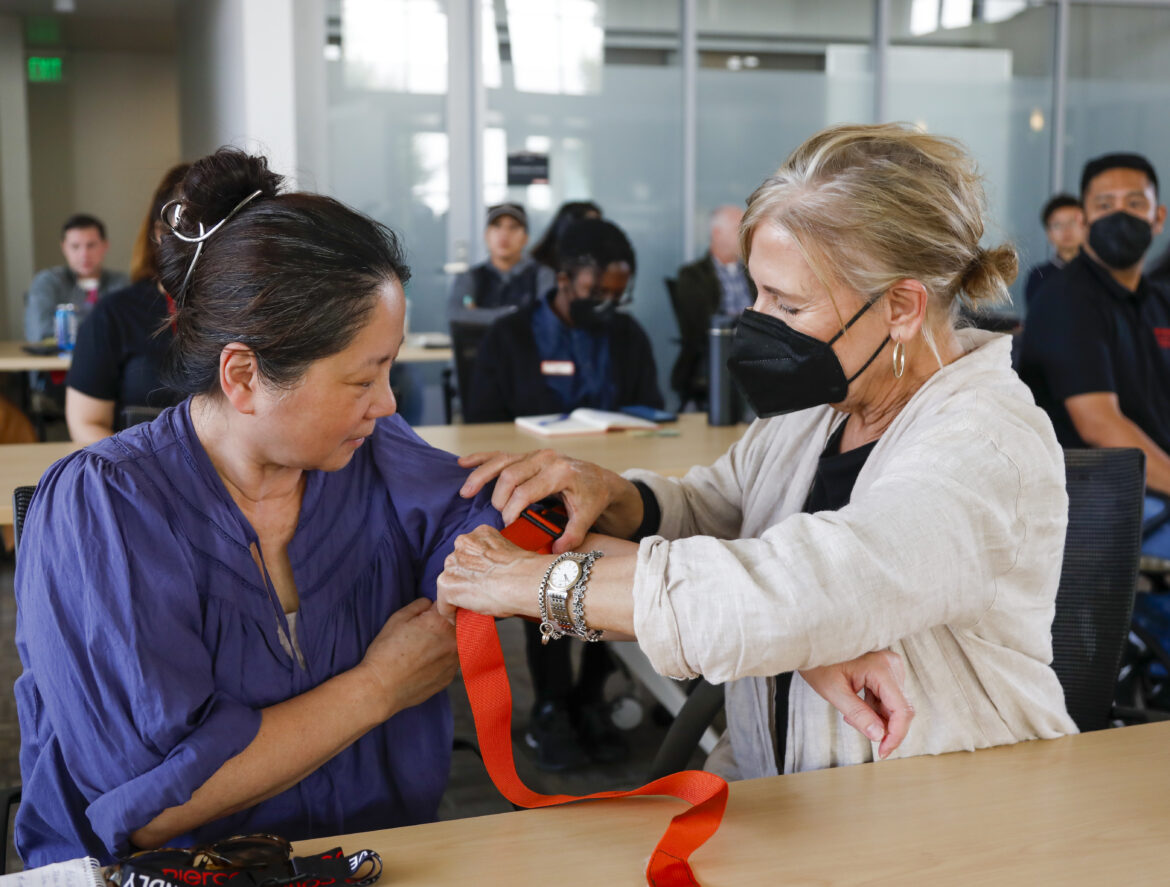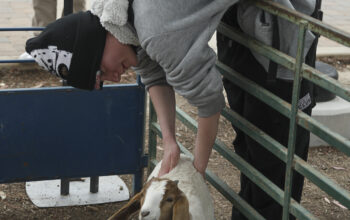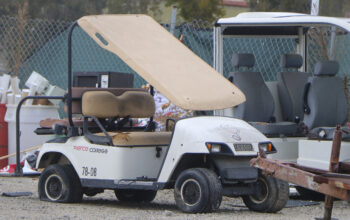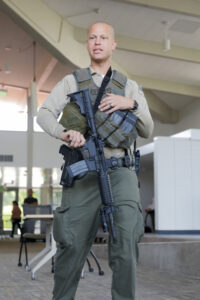
Correction: The event was organized by Administrative Operations Technician Grace Ochoa and COVID-19 Reporting & ADA Accommodations Safety Officer Raquel Matosic and only faculty attended.
Run, Hide, Fight! These are the three options recommended when confronted with an active shooter.
The Associated Student Organization (ASO) organized an Active Shooter Drill on Wednesday at Building 600. More than 100 members of Pierce College faculty and staff attended the training.
The training was provided by Adam Saurin who is the Safety and Emergency Preparedness Manager for the Los Angeles Community Colleges District and by Los Angeles Sheriff’s Department Deputy Mike Sampson.
The training was based largely on guidelines from the Federal Emergency Management Agency. FEMA describes an active shooter as “an individual actively engaged in killing or attempting to kill people in a confined and other populated area.”
Safety Officer Raquel Matosic helped coordinate the training.
The 1999 Columbine school shooting revealed a deficiency in the overall response to such an event and necessitated training to develop a new approach to active shooter response by law enforcement and civilians.
Saurin said that preparing for an active shooter scenario begins long before the actual event.
“Look for indicators in people who may be experiencing hardships and behaving differently,” Saurin said.
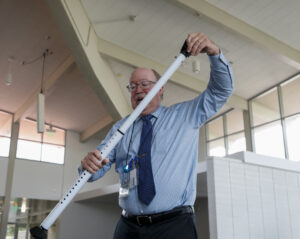
Anyone such as family members, coworkers and students can succumb to daily pressures and resort to drastic actions.
He provided several resources such as the Behavioral Intervention Team and the Employee Assistance Program that may act as a deterrent to the pathway to violence.
Saurin also stated that preparing for such an event also requires advance familiarization with the environment and recognizing the sound of gunshots.
Saurin said that individuals should consider going to a gun range and becoming acquainted with the sounds of various weapons being discharged.
Sampson, a nine-year veteran of the sheriff’s department assigned to the LACCD Safety and Security Services Training and Support Unit, was more direct in his approach.
“My job is to stop the threat,” Sampson said. “I die so you guys don’t have to.”
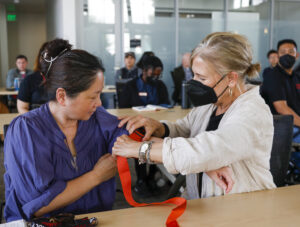
Sampson demonstrated how quickly he readies himself to confront an active shooter. In less than 30 seconds, he was able to run to his vehicle, acquire the proper weaponry and protective equipment to address the threat.
Both Saurin and Sampson steered clear of becoming involved in a gun debate and were sensitive to those in the audience who had an aversion to owning or shooting guns.
The course teaches that the preferred option to survive an active shooter is to run if the opportunity becomes available and it is safe to do so.
The second option is to hide. The instructors demonstrated several tools and examples of common items that can be used to secure entry doors.
The attendees quickly learned that this was no longer a passive session.
Both instructors yelled loudly that there was an active shooter outside and for everyone to barricade the entry doors. All attendees jumped into action and began pushing desks and chairs against the doors. Some used makeshift straps to secure the doors.
A short time later, at the command of the instructors, all attendees squeezed into two small rooms revealing how many people can actually fit in a women’s restroom.
The main classroom became deserted.
The last and final resort is to fight the assailant.
The instructors used a video to demonstrate how to incapacitate an active shooter.
Three target areas were identified–eyes, respiration and the weapon itself.
The video depicted a potential victim hiding in a corner with nowhere to go and the shooter approaching. The individual used a fire extinguisher against the gunman to temporarily disable him, allowing time for first responders to arrive and intervene.
Saurin reiterated the importance of this training.
“Active shooter training is helpful because it helps us as civilians understand what to expect in the event that this occurs on campus or anywhere else that we are at in our lives,” Saurin said.
Saurin said that you have a higher probability of getting injured or dying by crossing the street.
Matosic said that these training sessions provide a lot of answers to our questions and hope that she can share the information with others.
“We’re all sitting in an office or a classroom or a conference room and saying ‘What if that happened right now? What would I do?”’ Matosic asked.
Active shooting training is available to everyone on the FEMA website (IS 907).

